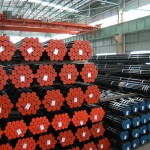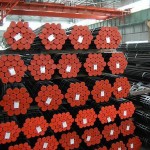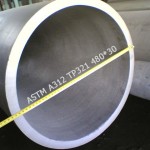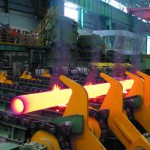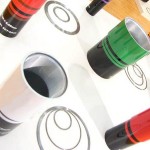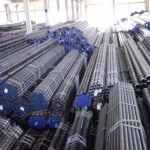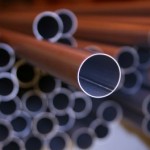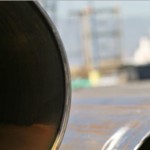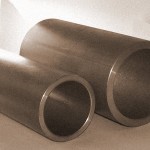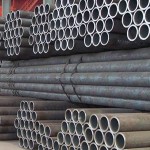Carbon Steel Pipe
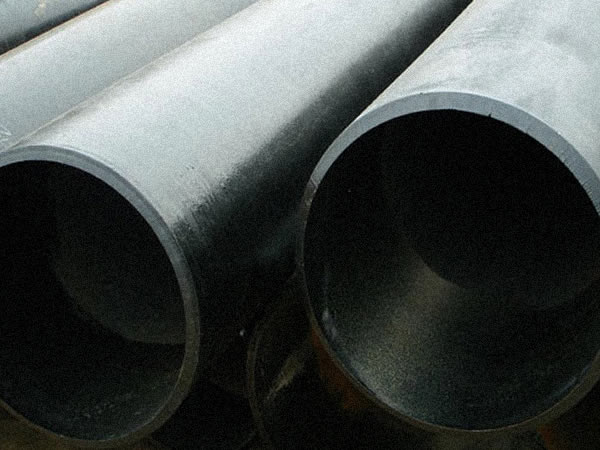
Most common and cost effective is carbon steel pipe and tubing including heavy wall mechanical tubing and seamless steel pipe. We stock and distribute a wide variety of steel pipe and steel tubing in ASTM and ASME and API grades of steel. We can also supply centrifugally cast tube and trepanned hollow bar as well.
The first methods for producing steel pipe were introduced in the early 1800s, and they have steadily evolved into the modern processes we use today. Large diameter steel pressure pipes for water and wastewater applications are typically made with carbon steel and installed as buried assets. Steel pipe can be made using three main methods:
- Seamless (extrusion mold) – Hot steel is pushed through a die to create the pipe shape. Diameters of up to 20” (500mm) can be made this way. Expensive but the most reliable.
- Welded – A sheet of steel is wrapped around a form then welded at the seam. Less expensive but not as reliable as seamless for high-pressure situations.
- Casting Mold – Hot liquid steel is poured into a mold. Not very common and as reliable as seamless.
The primary benefit of steel pipe is its strength. These pipes don’t crack under most impacts and can operate under high pressure. Under abnormal loads, steel will bend, rather than break.
Advantages
- High tensile strength
- High compressive strength
- Range of corrosion protection systems
- Wide range of diameters and wall thickness
- Welded joints give continuity
Disadvantages
- Prone to external corrosion
- Electrolysis prone
- Jointing requires skilled welders
- Internal/external corrosion protection systems add to price
- Coatings and linings can get damaged during installation and by third parties
Main Forms Failure in Steel Pipes
| Form of Failure | Causes of Failure | Indicators of Failure |
| Break failure | Pitting corrosion weakening wall | Damage to coating/linings, wall loss, pitting, and leaks |
| Longitudinal cracking | Thinning from general corrosion, and areas of pitting corrosion | Graphitization, groups of pitting, and wall loss |
| Pipe bursts | Third party damage | Construction activity |

